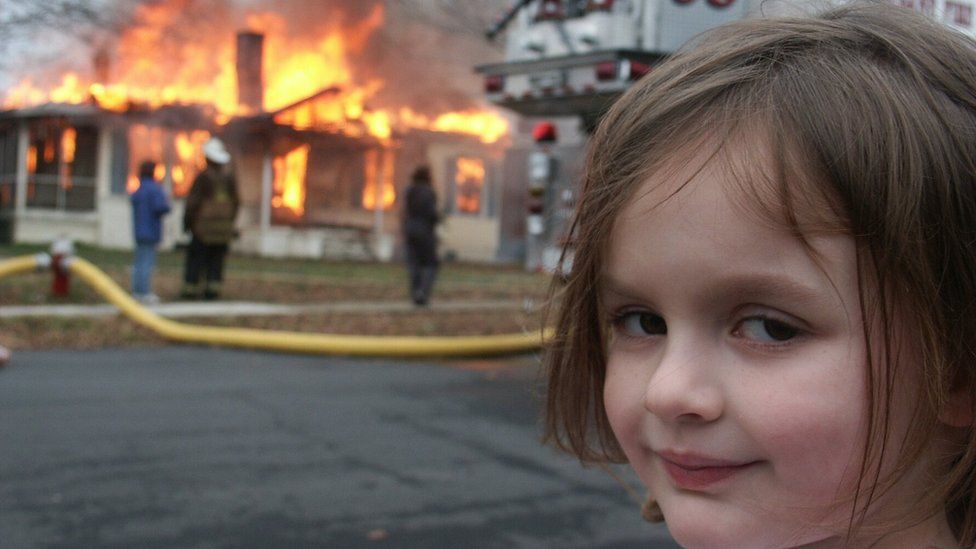NFTs: a bubble going to burst?
It’s usually no surprise when financial bubbles burst. Like those momentary and fragile liquid ones we are so used to, financial bubbles can swell quickly, sometimes to huge proportions. But still, they will inevitably burst despite their seemingly stolid foundations and the apparently unfaltering confidence of buyers willing to invest millions.
With this in mind, the booming world of Non-Fungible Tokens (NFTs) can be observed as a bubble very nearly fit to burst. When it does it may make some rich suckers very sad, and it may alter the careers of many online artists or NFT minters. Owners of $70 million Jpeg might not look so clever certainly.
But instead of getting into the potential woes of NFT owners, sellers, and producers, let us think about the current crypto landscape. NFTs are the most dynamic and potentially flexible form of cryptocurrency. Where Bitcoin and Ethereum have been plagued by instability and doubt, NFTs offer a form of cryptocurrency tied to more tangible notions of value, artwork. NFTs are digital certificates of authenticity so to own one is, in a sense, the possession of the authentic piece of digital artwork. Their non-fungible nature perhaps allows the NFT to wear its heart more on its sleeve compared to cryptocurrencies which are more typically shrouded in the mysterious and winding reels of blockchain or whose value is predicated upon the whim of Elon Musk’s tweets.
NFTs are the most dynamic and potentially flexible form of cryptocurrency
So, while they are most definitely a bubble (obvious by their booming growth, fragile and volatile nature, reliance upon people’s confidence and belief in their value), NFTs are far more dynamic than the more straight-forward world of cryptocurrency. You can purchase NFTs with cryptocurrencies but for laymen they exist more distinctly outside of the crypto world, as pieces of artwork or more explicitly as assets which hold immense value.
Hallmarks of the boom are evident in the art world. Images, from memes to paintings by Michelangelo and Titian, have been minted as NFTs and sold for vast sums. NFTs have also provided a novel way for artists of the modern age, such as digital sketch-maker Beeple, to sell their wares to specific buyers. For example, take an original meme template such as the ‘Disaster Girl’ meme. Turn it into an NFT, and you could be sitting on a goldmine. Zoe Roth, the little girl from the now well-known photo behind the meme, made $500,000 by selling the original photo of this meme as an NFT.
Yet the art world is also where the many faults of the NFT are made obvious. NFTs are merely a novelty, an easy way to make cash for those in the art world who tend to rely upon very limited yet very lucrative products. Our collective associations and ideas of value have definitely not been revolutionised (yet!). After the now historically famous artist Beeple sold his JPEG of thousands of digital pictures as an NFT for $70 million of Ethereum (a type of cryptocurrency) he quickly transferred that money into hard cash. Old habits die hard and even a man who made millions off of the craze still admitted that it was most certainly a bubble.
But while the likes of the NBA and the Uffizi Gallery are currently minting NFTs and enjoying some juicy profits, where is the rest of the world left? Will a return to the more physical world of art and assumptions of more tangible and quantifiable value precipitate a bursting of the NFT bubble as we emerge from lockdowns? Were they only spurred on as a craze because of lockdowns and bored millionaires?
NFTs prove that commerce will still drive artwork in a way that pure unhindered and non-commercial human creativity simply cannot
While NFTs were certainly growing as a craze before covid, it was only in the last year that they made really big bucks and hit the headlines. Only time will tell here of course, but certainly many of us may not hold the ‘ownership’ of a spool of blockchain on our screens with much value if we have just emerged from a world-changing pandemic which has revealed to many that there are things far more precious than material wealth.
Really, the most tantalising part of the NFT craze is what may follow after it. Not the current charade of calling their creation a ‘step-forward’ for art. NFTs are certainly symbolic of the potential for online art to make serious dollars and for digital art to make a much heavier impact outside of the social media sphere. An NFTs value is primarily as an asset, the nature of the ‘artwork’ itself is barely of secondary importance. So long as it is perceived to hold value by various parties, NFTs will keep getting minted.
And here lies the real pity of the current NFT obsession. NFTs prove that commerce will still drive artwork in a way that pure unhindered and non-commercial human creativity simply cannot. Our world is not built to allow artists to pursue unprofitable talents. Those who are cashing in and minting NFTs are just as much a part of the problem as they are helping to create a solution. To mint a single NFT costs about 90 kg of carbon, the same as an hour of flying on a jet. This is perhaps what we should think about most when it comes to NFTs. Unlike artwork which allows us to contemplate and realise the beauty of our planet, the NFT is a cog in the machine which is destroying it.

Comments